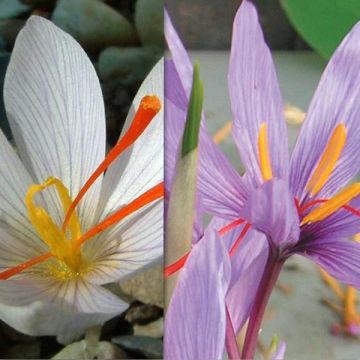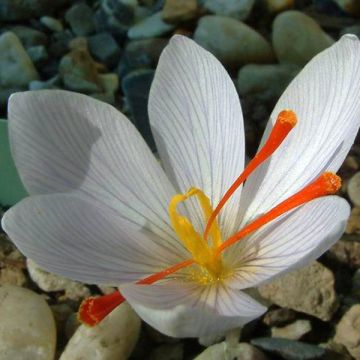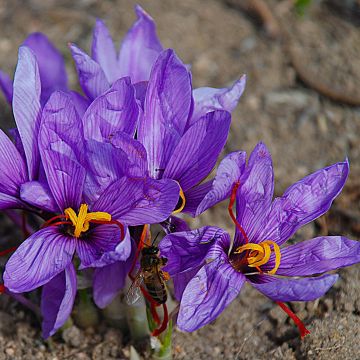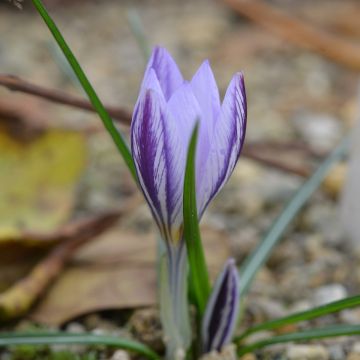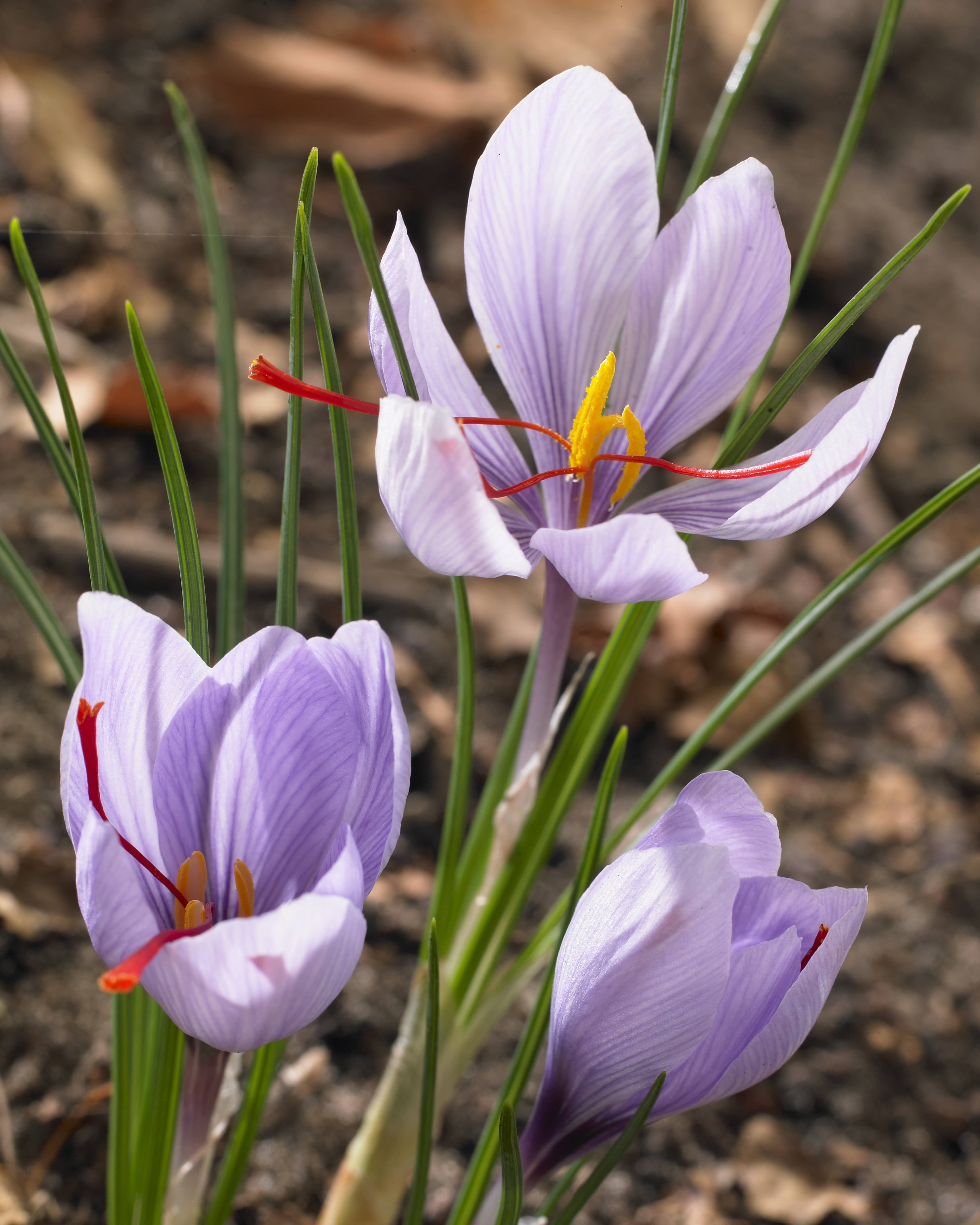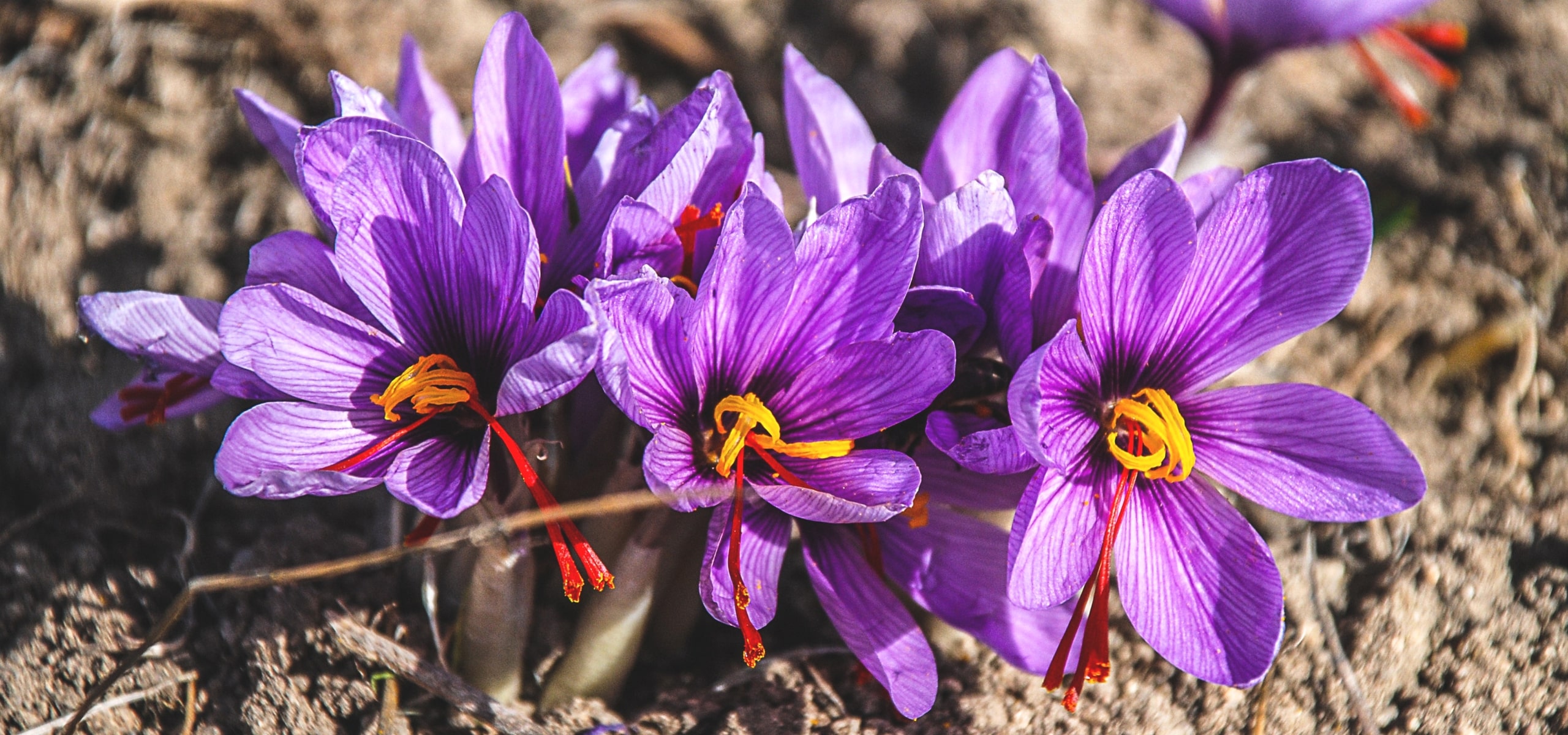
Crocus sativus: plant, cultivate and harvest your saffron
Our tips for growing this precious spice
Contents
The cultivation of Saffron Crocus, or Crocus sativus, is not very complicated. Its success can be summarised in three essential points: drainage, sunlight, and patience! Adhering to these three simple conditions will allow you to harvest this rare spice at home and at a low cost. Discover all our tips for successfully cultivating saffron crocus, from planting the bulbs to the harvest!
Where to plant saffron crocus?
The saffron crocus or Crocus sativus is grown almost everywhere in France. It prefers full sun: favour south or south-west exposures. It is a plant that thrives in rich, well-drained soil. Indeed, excess moisture, particularly in winter, can harm its development and could even, in extreme cases, cause it to rot. However, it is possible to grow saffron in heavy, clayey soil… simply by carefully preparing the plot where it will be planted.
Read also
Crocus: how to plant them?When to plant saffron?
Saffron crocus bulbs should be planted in summer, ideally from July to early August, although it is still possible to plant in September. The earlier you plant, the more they will benefit from the summer heat to start their vegetative cycle… and the earlier you will harvest! If you cannot plant your bulbs upon receipt, store them in their packaging in a cool, dark place.
Discover other Saffron Crocus
View all →Available in 0 sizes
Available in 2 sizes
Available in 2 sizes
Available in 1 sizes
How to plant Saffron Crocus?
Before planting, start by preparing the ground carefully:
- Work the soil to a good depth, at least 30 cm
- Add organic fertiliser or well-decomposed compost
- If your soil is heavy, incorporate obligatory gravel or fine pumice to lighten the soil
- You can also install a layer of draining sand at the bottom of the planting holes.
Once the ground is well prepared, plant your bulbs, either in clusters (groups of 3 bulbs) spaced 15 cm apart, or in rows with one hole per bulb, with a distance of 8 cm between bulbs.
The recommended planting depth varies depending on your climate:
- If your region is rather warm and dry (continental or Mediterranean climate): bury the bulbs at a depth of 15 – 20 cm to protect them from heat and drought,
- If your region is rather cold and wet (oceanic or temperate oceanic climate): bury the bulbs at a depth of 10 – 15 cm to protect them from excessive moisture. However, ensure a minimum of 10 cm to prevent freezing during cold periods.
Once you have planted your bulbs, proceed, if necessary, with an initial watering.
If you are planting large quantities, to create a proper saffron field, plan for between 60 and 80 bulbs per m2, as you need to allow for pathways for harvesting.
Finally, be aware that saffron, although it is preferable to plant it in soil, can also be grown in a large pot or planter.
How to care for saffron crocus?
Originating from mid-mountain areas, the saffron crocus is particularly hardy. It withstands summer heat and frost, even severe (-10°C), in winter. Therefore, it can remain in the soil. It requires little to no maintenance, apart from regular weeding. Watering is not necessary, except in cases of extreme drought or in Mediterranean regions. In such cases, do not allow the soil to dry out excessively, but do not water too abundantly either!
After flowering, do not cut the long, thin leaves of the Crocus: they allow the bulb to regenerate, grow larger, and produce, each year, about 3 small bulblets, which you can replant to expand your saffron patch.
How to harvest saffron?
The saffron harvest is a lengthy operation that requires a bit of patience and precision. The red gold is well earned!
It takes place in autumn, from October to November, depending on the region and climatic conditions (the flowers bloom when morning temperatures drop below 10 °C). It lasts several weeks, or even a month.
To harvest your saffron, it is important to intervene each day, in the middle or late morning (once the dew has dissipated), on newly bloomed flowers.
Depending on the number of plants you have, you can choose between these two methods of harvesting:
- Leave the flowers in place and carefully (using tweezers, fine scissors, or your nails…) remove the 3 red filaments from the pistil (stigmas).
- Pick the flowers using scissors or your nails, bring them home, and then extract the red filaments in the same way as the first method.
Note that harvesting flowers or from already opened flowers is possible, but saffron then loses some of its culinary qualities… which would be a shame!
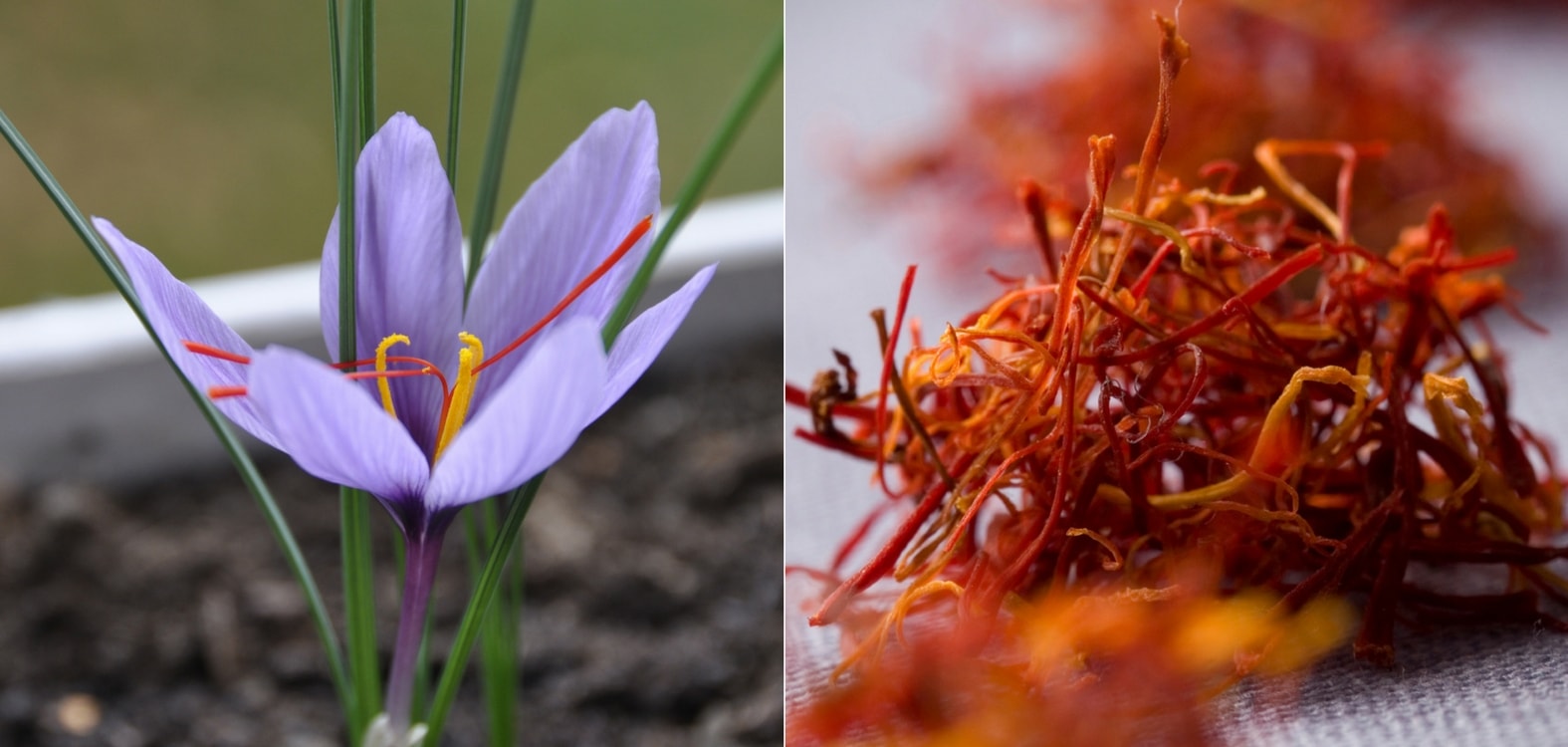
How to dry and store it?
Once the saffron filaments are harvested, they need to be dried in order to preserve them.
To do this, carefully place them on a sieve, and put it in the sun or in a dry, well-ventilated area.
Drying can also be done in the oven, provided it can be set to a low temperature (maximum 60°C) and has a ventilation function. This process takes about 30 minutes.
Once this operation is complete, you will store your saffron in a small airtight jar or in a well-sealed bag, away from light. Your precious spice will retain its qualities for approximately two years.
How many bulbs for what volume of Saffron?
It is difficult to provide a precise answer: in professional cultivation, yields typically range from 1 to 10 kg per hectare depending on the soil, sunlight, and bulb size.
For a more modest cultivation, 150 bulbs will produce a few hundred flowers, yielding about 3 g of saffron harvested, which is approximately 1 g of dried saffron.
For family use, this is already more than enough to flavour a few dozen jars of jam or dishes!
- Subscribe!
- Contents































